Sea floor sediments
Type of resources
Topics
Keywords
Contact for the resource
Provided by
Years
Formats
Representation types
Update frequencies
Scale
-
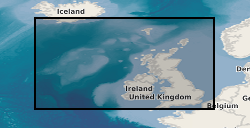
The data shows the location of seabed and sub-seabed samples collected from the UK continental shelf, held by BGS. A BGS Sample Station is a general location at which sampling with one or more equipment types, such as borehole, grab, dredge, has been used. Historically, all deployment of equipment was recorded with the same coordinates so the data shown here will often show several sets of data at the same location. Newer data will begin to show distinct locations based on an equipment type. This layer shows all the BGS Sample Station Locations, including those where the Sampling was unsuccessful. The layers below are divided into distinct equipment types, plus a separate layer for unsuccessful sampling. BGS Sample Station Locations can have a wide range of potential information available. This can vary from a basic description derived from a simple piece of paper up to a complex set of information with a number of datasets. These datasets can include particle size analysis, geotechnical parameters, detailed marine geology, geochemical analysis and others. Prices are available on further enquiry.
-
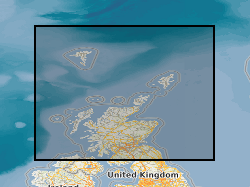
The data consist of the results of geotechnical testing carried out at various depth intervals on shallow cores or boreholes collected BGS from the UK Continental Shelf. The bulk of the data north of 56N are in digital form and result from testing carried out on board survey vessels using hand-held test equipment (penetrometers and shear vanes). These values are averaged for each test interval, and are expressed in kiloPascals. There are approximately 6000 test results in the data set. Some more detailed test information, in non-digital and report form is held for selected sites. Also for most sites where digital data is not available, geological descriptions of core material will also contains semi-quantitative information on the stiffness of the material. Geotechnical knowledge is required to understand and interpret the results if they are to be used as a basis for engineering studies. Core material are managed as part of the BGS Materials collection and are available for examination, testing or subsampling. The data are stored as part of the National Geoscience Data Centre (NGDC) and the Marine Environmental Data and Information Network (MEDIN) Data Archive Centre (DAC) for Geology and Geophysics. Data are delivered via BGS Offshore GeoIndex www.bgs.ac.uk/GeoIndex/offshore.htm geotechnical layers. Reference: Fannin, NGT. (1989) Offshore Investigations 1966-87. British Geological Survey Technical Report WB/89/2, British Geological Survey.
-
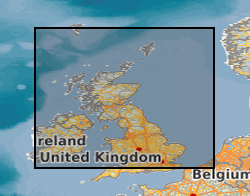
The concentrations of up to 30 trace elements in approximately 9,000 sea-bed samples from the UK Continental Shelf were determined by BGS using a variety of analytical techniques. In some cases samples were tested using more than one method. The analyses were carried out on freeze-dried samples of the sand and mud fractions of the samples. The data are stored as part of the National Geoscience Data Centre (NGDC) and the Marine Environmental Data and Information Network (MEDIN) Data Archive Centre (DAC) for Geology and Geophysics. Data are delivered via the BGS Offshore GeoIndex www.bgs.ac.uk/GeoIndex/offshore.htm geochemical layers. References: Stevenson, A G (2001) Metal concentrations in marine sediments around Scotland: a baseline for environmental studies, Elsevier Science; Stevenson, A G et al (1995) The geochemistry of sea-bed sediments of the United Kingdom Continental Shelf : the North Sea, Hebrides and West Shetland shelves, and the Malin-Hebrides sea area (http://nora.nerc.ac.uk/507899/).
-
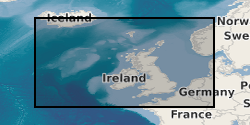
The data set consists of the results of particle size analysis (PSA) performed on approximetaly 29,000 sea-bed sediment samples collected by BGS from the UK Continental Shelf and adjacent deep water areas, mostly using sediment grabs, but also sediment corers on occasions. Measurements were also made on approximately 8000 downhole sub-samples from shallow cores and boreholes. Data from other UK organisations have also been added to the PSA dataset. The data are stored as part of the National Geoscience Data Centre (NGDC) and the Marine Environmental Data and Information Network (MEDIN) Data Archive Centre (DAC) for Geology and Geophysics. Data are delivered via the BGS Offshore GeoIndex www.bgs.ac.uk/GeoIndex/offshore.htm Seabed Sediment Data layers.
-
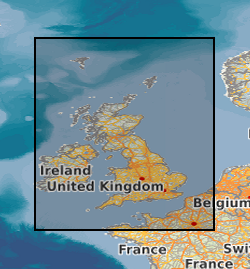
The BGS Seabed Sediments 250k dataset is vector data is vector data which reflects the distribution of seabed substrate types of the UK and some of its adjacent waters at 1:250,000 scale. This comprehensive product provides a digital compilation of the paper maps published by BGS at the same scale, as well as, additional re-interpretations from regional geological studies. The seabed is commonly covered by sediments that form a veneer or thicker superficial layer of unconsolidated material above the bedrock. These sediments are classified based on their grain size reflecting the environment in which were deposited. This information is important to a range of stakeholders, including marine habitat mappers, marine spatial planners, offshore industries (in particular, the dredging and aggregate industries). This dataset was primarily based on seabed grab samples of the top 0.1 m, combined with cores, dredge samples and sidescan sonar acquired during mapping surveys since the early 1970s. The variations in data density will be reflected in the detail of the mapping.
-
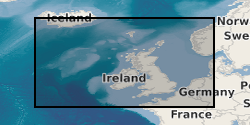
The Marine Photographs Archive held by BGS includes photographs of hydrocarbon well and (non-hydrocarbon) marine boreholes, cores and other samples. There are also photographs of the seabed and survey operations. The photos are primarily for the UKCS (United Kingdom Continental Shelf) and surrounding areas and date from the 1970s onwards. The photographs, which are a mix of prints, negatives and digital are applicable to a wide range of uses including environmental, geotechnical and geological studies. There are also some x-rays of cores.
-
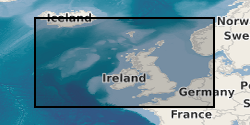
The British Geological Survey has collected over 50000 offshore samples using grabs, dredges and shallow coring devices (to a maximum depth of 6m below the sea bed). The collection also includes additional third party data and has assisted in the creation of BGS Marine Geology Maps. The distribution is variable, but in general there are sample stations spaced about every 5 - 10km across the entire UK Continental Shelf (UKCS). In some localised areas the sampling density is much higher. The data held includes digital data and analogue records (sample data sheets), plus associated physical sample material. Sample data sheets which have been scanned contain index information and geological descriptions and are more detailed from 1983 onwards. Coded geological descriptions were entered on sheets which were subsequently digitised, and this information is available for about 10,000 samples. The data also includes results of analyses such as micropalaeontological examination or age dating. Particle Size Analysis, geochemistry and geotechnical data are described in separate metadata entries. Sample material are managed as part of the BGS Materials collection and are available for examination and subsampling. The data are stored within the National Geoscience Data Centre (NGDC) and Marine Environmental Data and Information Network (MEDIN) Data Archive Centre (DAC) for Geology and Geophysics. Data are delivered via the BGS Offshore GeoIndex www.bgs.ac.uk/GeoIndex/offshore.htm.The activity and scan layers contains location information, metadata and links to scanned sample datasheets/core logs, and the geological, geotechnical, geochemical and sea-bed sediment data layers contain observations and/or measurements as digital values. The data are applicable to a wide range of uses including environmental, geotechnical and geological studies. Reference: Fannin, NGT. (1989) Offshore Investigations 1966-87. British Geological Survey Technical Report WB/89/2, British Geological Survey.
-
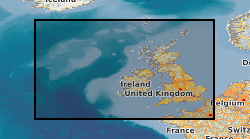
The Marine Hard Substrate dataset maps areas of rock or hard substrate outcropping or within 0.5m of the sea-bed. The interpretation was based on a variety of data sourced from within the British Geological Survey and externally. Data consulted includes archive sample and seismic records, side scan sonar, multibeam bathymetry and Olex datasets. The distribution of hard substrate at the seabed, or within 0.5 m is important in dictating the benthic assemblages found in certain areas. Therefore, an understanding of the distribution of these substrates is of primary importance in marine planning and designation of Marine Conservation Zones (MCZs) under the Marine and Coastal Access Act, 2009. In addition, a number of other users will value these data, including marine renewable companies, aggregate companies, the fishing and oil and gas industries. In order to address this issue it was necessary to update British Geological Survey sea-bed mapping to delineate areas where rock, boulders or cobbles are present at, or within 0.5m of the sea-bed surface. A polygon shape file showing areas of rock or hard substrate at, or within 0.5m of the sea-bed has been developed. The dataset has been created as vector polygons and are available in a range of GIS formats, including ArcGIS (.shp), ArcInfo Coverages and MapInfo (.tab). More specialised formats may be available but may incur additional processing costs.
 NERC Data Catalogue Service
NERC Data Catalogue Service